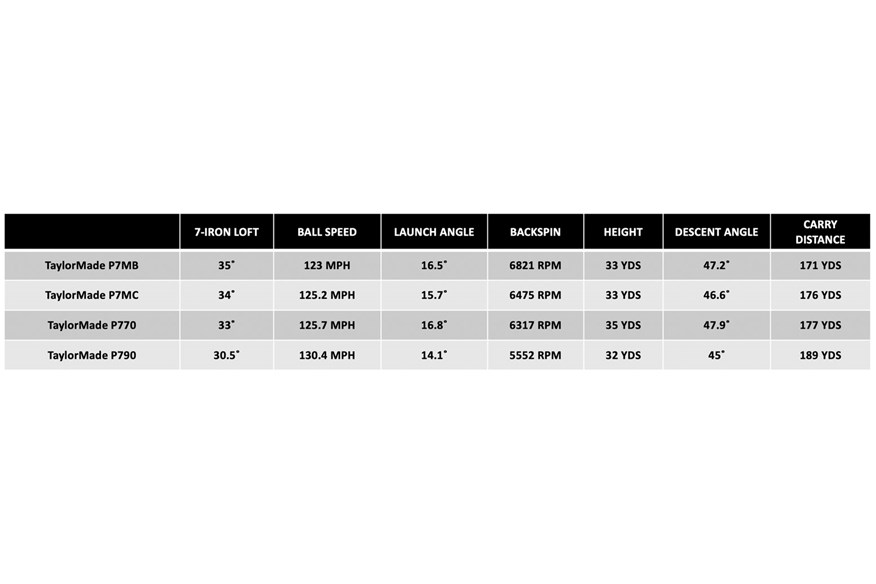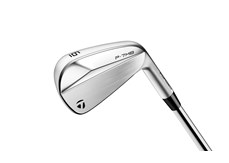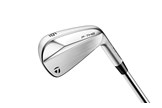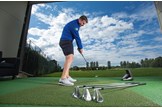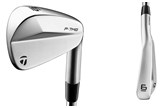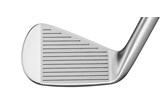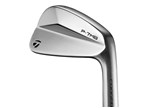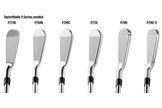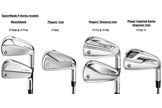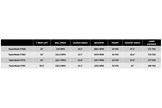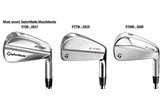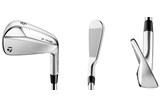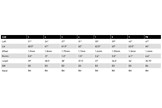TaylorMade P7MB Iron Review
Last updated:
-
At a glance
- TG Rating
- Owner Rating
What we say...
TaylorMade’s new P7MB iron is a forged muscleback blade designed for the world’s best ball strikers.
It’s not often a ladies’ tour player wins with a new iron model before they’ve even been spotted on a men’s tour. But that’s exactly what happened when Charley Hull got fitted for the P7MBs the day before winning the first Rose Ladies Series event in June.
RELATED: New TaylorMade P790 irons revealed and tested
The TaylorMade muscleback P7MBs naturally have narrow soles, minimal hosel offset and a wafer-thin topline. But TaylorMade has also spent time focusing on the back of the head, so the geometry catches the light in a player’s bag.
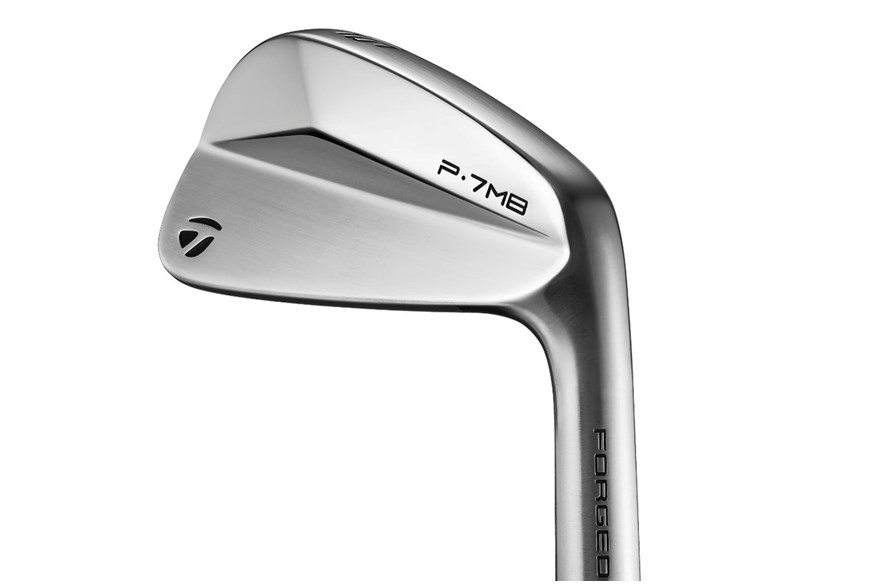
RELATED: TaylorMade P7MC irons review
Each face and groove is CNC milled for precision which means they’re for the world’s best ball strikers and golfers who want to shape and flight shots at will. Dustin Johnson heavily influenced the model, as he likes to see a little longer blade length (the P7MB are 1.4mm longer than the P730) and a constant blade length throughout the set. A fraction more offset in the long irons was the request of Rory McIlroy.
RELATED: Best Irons
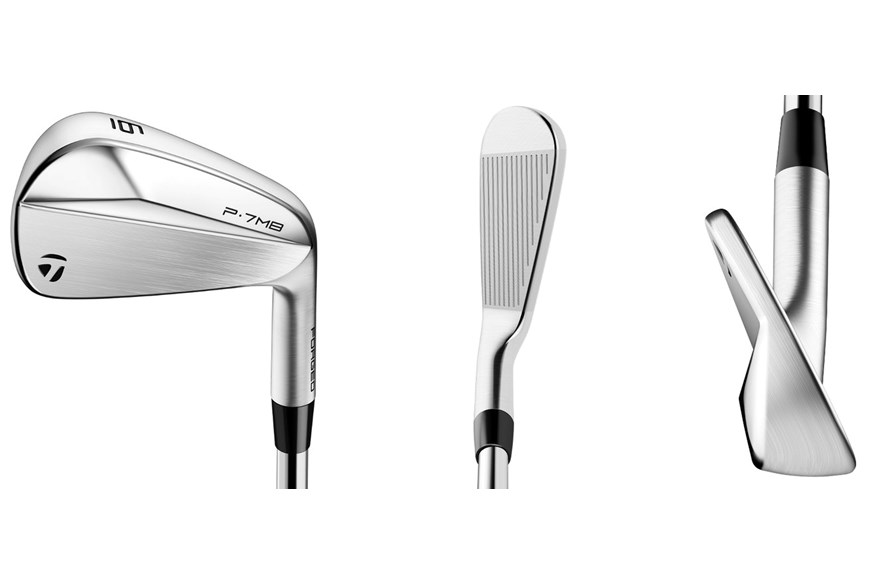
What you need to know about the TaylorMade P7MB iron
Tour-inspired shaping
When you’ve got three of the best five golfers on the planet on staff, you obviously get their input into any new design. TaylorMade say the new P7MB is very close to Dustin Johnson‘s DJ Proto iron. DJ likes a longer blade length, and a constant blade length throughout the set. Rory McIlroy also requested a fraction more offset in the longer irons.
RELATED: Dustin Johnson – My five keys for lower scores
Compact grain forging
This is a new term you can expect to hear a lot of from TaylorMade. The new process means forging is done in five steps, by a 2000-ton press, which is two or three times the industry standard weight. TM say the grain structure of each 1025 steel head becomes more tightly compacted and aligned, which improves feel.
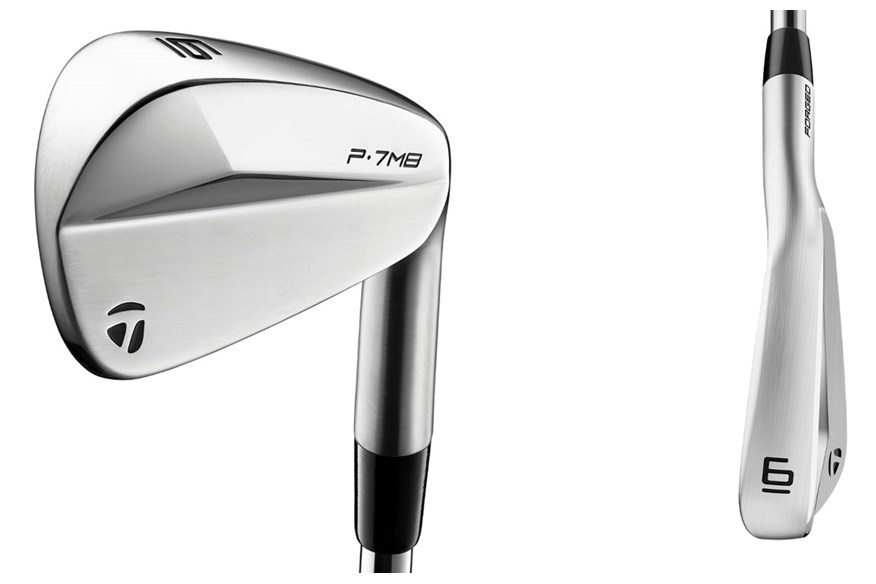
Precision CNC milled face and grooves
By machining the P7MB face and grooves, precision and consistency are guaranteed. The best players want to flight and shape shots at will, so these irons have the most aggressive grooves the brand have ever created to help deliver exact shot-making.
RELATED: TaylorMade P770 irons review
Modern muscle back geometry
A blade has to look like a blade if the world’s best players are ever going to put them into play, which pretty much governs the shape and size of a muscle back iron very tightly. TaylorMade say they’ve focused a lot of effort on the geometry of the back of the head so it catches the light in a player’s bag.
RELATED: TaylorMade Hi-Toe Raw wedge review
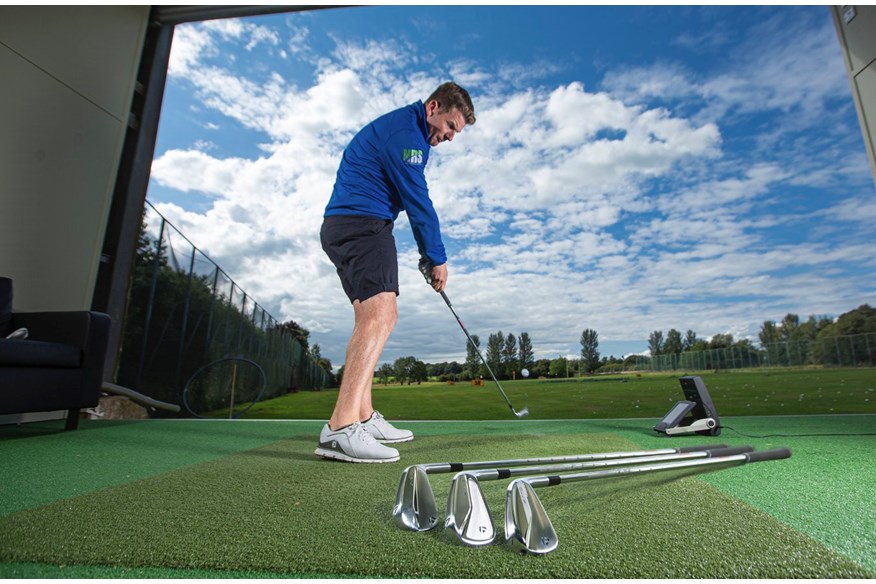
Data comparison: TaylorMade P7MB, P7MC, P770 and P790 irons
RELATED: Tested – Which TaylorMade irons is right for me?
What TaylorMade say about the P7MB iron
“The all new P7MB was designed for the best ball strikers in the world who demand surgical like control and a pure feel at impact,” ” said Matt Bovee, Product Creation, Irons Category.
“Contemporary aesthetics with a thin top line and slim sole creates a minimalist profile that appeals to the ultimate purist.”
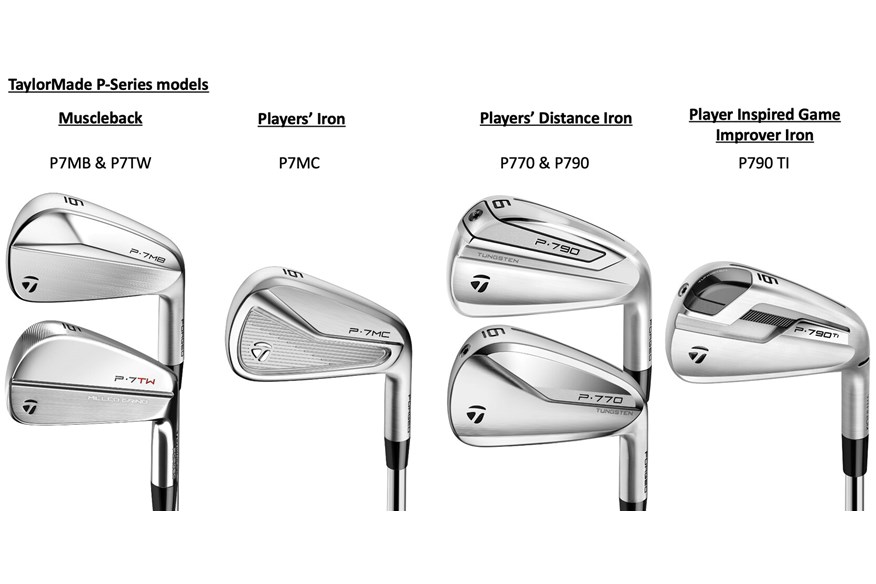
TaylorMade P7MB iron: Verdict
TaylorMade have had absolutely no issues making some stunning blade irons over the years, but the P7MB has to be one of the finest the brand have ever created.
It’s little surprise then that the MBs have had decent golfers excited since Charley Hull won a Rose Ladies Series event with a set back in July before they’d appeared on the mens’ Tour.
The set has a constant blade length so the 3-iron and PW are very similar in length, which is very different to the P7TWs (Tiger Woods irons) which have inverted blade lengths so the short irons are longer than the mid and long irons. TaylorMade say extra blade length over the previous P730 increases forgiveness a little.
Related: WITB Dustin Johnson
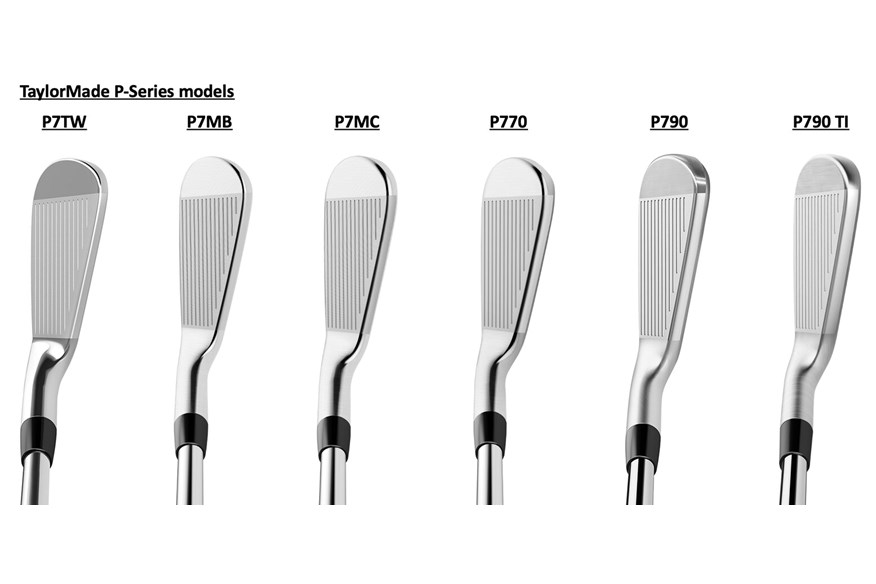
But the real win with the MBs over previous TaylorMade players’ irons is that they are actively encouraging golfers to mix and match P-Series irons to find their ideal set-up. It means you can switch from muscleback (P7MB) to cavity back (P7MC) with the 7-, 6-, 5- or 4-iron and buy just what suits your game.
If the MBs are tugging at your heart strings, let our test data spell out what’s on the line by choosing a set. TaylorMade’s hollow body P770 iron launches higher (3.2%) and faster (2.5%), while peaking shots out higher (6.25%) and dropping them on to a green at a steeper angle (2.2%), plus they give an extra six yards (3.5%) carry with a 7-iron.
Giving up all that just for 400rpm more backspin (5.6%) with the P7MB would be ludicrous for most club golfers.
RELATED: Love KBS iron shafts? Should you try the new KBS TD driver shaft?
Specs: TaylorMade P7MB iron
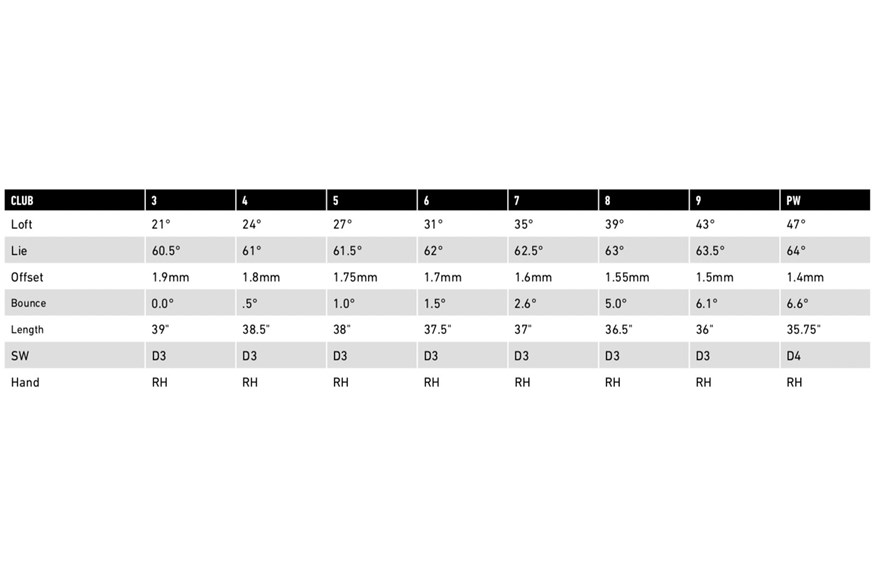
We asked Matt Bovee for the story behind the new P7MB, P7MC and P770 irons.
How hard is it to design a blade like the new P7MB, as there’s so little you can change?
In terms of being able to make a blade ‘better’, you can’t chase ball speed and forgiveness, so it really comes down to feel, turf interaction and shaping. From there even though the muscle back shape has an effect on feel we like to see the back of the iron as a blank canvas for creativity.
The P7MB had a great starting foundation as it came from Dustin Johnson’s DJ Proto iron. It gave us tour proven mass properties, sole curvatures and bounce angles and we know our staff players like. Any good feeling forged iron needs mass behind the hitting area to ensure great feel.
Every blade out there has more weight on the toe than the heel and that’s to offset the hosel weight, we created the P7MB’s faceted back bar to be the third dimension which you don’t normally see on a blade. The shaping helps ensure the centre of gravity is where the best players want it, which is slightly heel side of centre.
From there it becomes a creative exercise, designing the back bar geometry and I think with this we’ve come up with a look and style that’s never been used on a blade before.
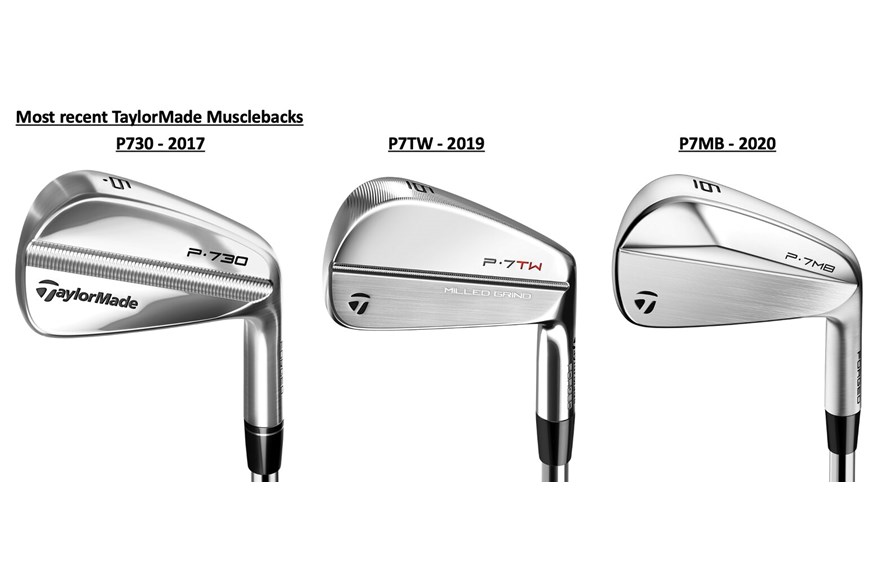
RELATED: WITB – Dustin Johnson’s clubs reviewed and tested
How much of a challenge is it designing irons for the world’s best players?
It’s a labour of love but at TaylorMade we have such a wealth of knowledge to build off. We’ve had an incredible stable of players for a long time, and we continue to build off that platform, it’s probably not quite as challenging as people might think.
We have a great feel for what our players are looking for, and we marry that with whatever we’re trying to create. With the P7MB and P7MC you can dial in the launch and spin quickly where models that chase speed tend to be more difficult as players know the launch window they want.
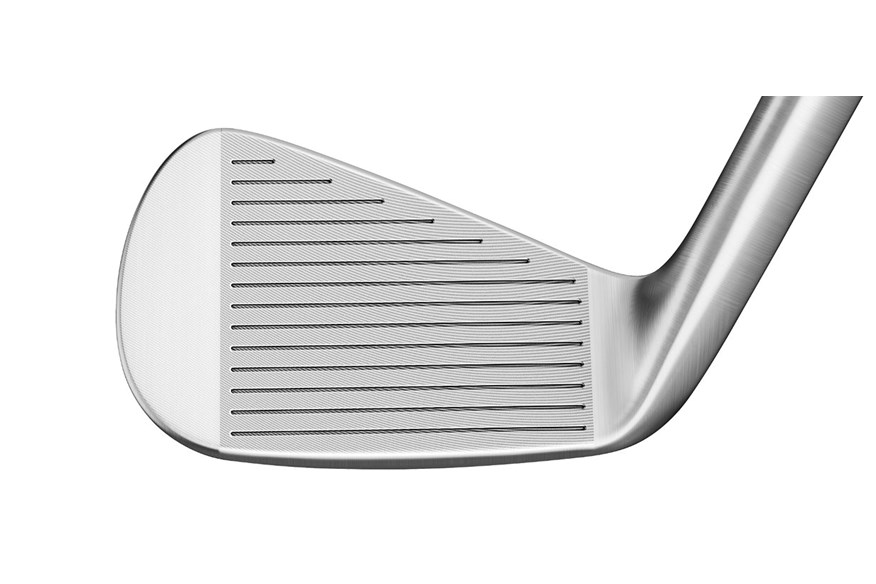
Do you feel more pressure when designing for the world’s best players or is it more difficult designing a game-improving SIM Max iron which has to sell to thousands of golfers?
It’s pretty equal, but it’s different types of pressure. With the P7MB and P7MC you have to satisfy a handful of players and once you tick that box everything else just falls into place.
There’s a lot of pressure to get the equation right on the game-improver iron or players distance product, like we did with the update on the P790 in 2019.
But because we got that so right there wasn’t so much pressure creating the new P770.
RELATED: TaylorMade SIM UDI and DHY driving irons tested
WATCH: Best New Forged Iron 2020
How important is selling the new P-Series irons as split sets? You’ve not done that for a while.
Everybody plays golf differently and everyone has their own style of play. So instead of trying to create a perfect combo set like we did with the P760, which was a progressive flow set, which was great for some players, sthere were others who still wanted a single piece forged cavity back.
By giving players the ability to build the set they want, they can effectively create their own flow set. It means golfers can opt for something that’s more player orientated or distance orientated, it just gives more people more options.

There’s now six P-Series irons targeting players up to a 16 or 18 handicap (the P790 Ti iron). Why do you need so many models?
Regardless of handicap we want players to aspire to be better, so we have clubs that project an image like ‘I’m a player too’ or ‘I’m working towards being a player’. The Ti is an experiment, we wanted to see how much performance we could pump into if costs aren’t a factor and go all out on materials.
For us we see four core irons – the P7MB, P7MC, P770 and P790. That’s where P-Series really shines and will do the bulk of its volume.
How much difference is there in inertia between the P7MB, P7MC and P770?
Obviously the MB has the least amount of inertia, it does have a little more forgiveness than the P730 though as it has a longer blade length. The MC has a little more (than the P7MB) forgiveness because of the perimeter weighting and the blade length is a touch longer. It’s a moderate step up from the MB, I like to say it’s got just a hint of forgiveness.
The P770 is a pretty big jump from the MC. And there’s two reasons why, it’s got a massive tungsten weight on the toe side of centre and there’s a longer blade length, which drives up the MOI. It also has a fast face and Inverted Cone Technology which expands the sweet spot, and that’s another component of forgiveness.
It is remarkably close to the P790 in terms of forgiveness, which is impressive considering the head size.
READ NEXT: TaylorMade MG2 TW revealed

Review written by: Simon Daddow
Job title: Today’s Golfer – Equipment Editor
Product Information
TaylorMade P7MB iron
RRP: £1299
Availability: 3 - PW
Stock shaft: KBS Tour
Stock grip: Golf Pride Z-Grip +2
7-iron loft: 35° 7-iron offset: 1.6mm
Forgiveness rating: One (see other forgiveness category one irons here)
